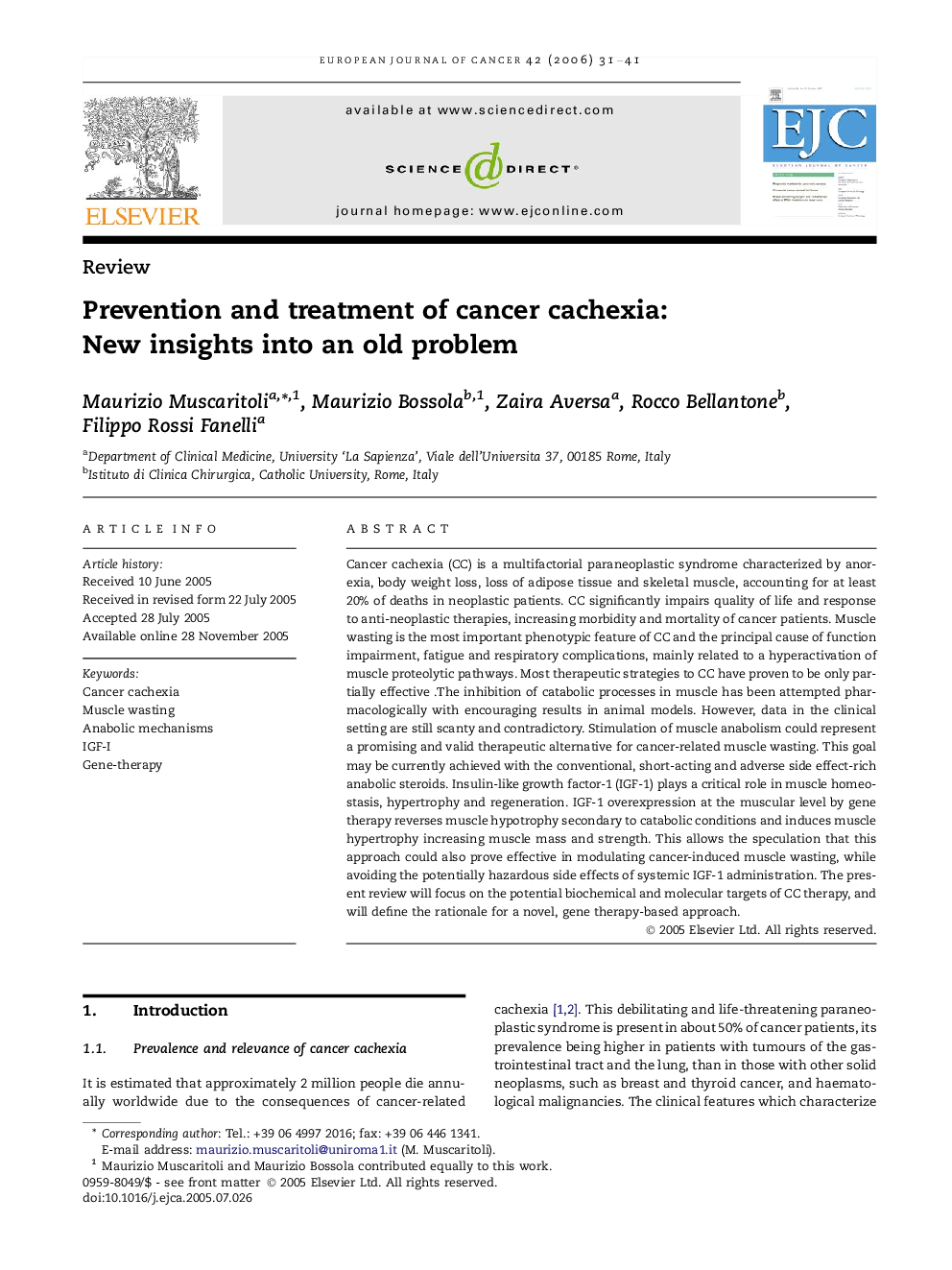| Article ID | Journal | Published Year | Pages | File Type |
|---|---|---|---|---|
| 2126367 | European Journal of Cancer | 2006 | 11 Pages |
Cancer cachexia (CC) is a multifactorial paraneoplastic syndrome characterized by anorexia, body weight loss, loss of adipose tissue and skeletal muscle, accounting for at least 20% of deaths in neoplastic patients. CC significantly impairs quality of life and response to anti-neoplastic therapies, increasing morbidity and mortality of cancer patients. Muscle wasting is the most important phenotypic feature of CC and the principal cause of function impairment, fatigue and respiratory complications, mainly related to a hyperactivation of muscle proteolytic pathways. Most therapeutic strategies to CC have proven to be only partially effective .The inhibition of catabolic processes in muscle has been attempted pharmacologically with encouraging results in animal models. However, data in the clinical setting are still scanty and contradictory. Stimulation of muscle anabolism could represent a promising and valid therapeutic alternative for cancer-related muscle wasting. This goal may be currently achieved with the conventional, short-acting and adverse side effect-rich anabolic steroids. Insulin-like growth factor-1 (IGF-1) plays a critical role in muscle homeostasis, hypertrophy and regeneration. IGF-1 overexpression at the muscular level by gene therapy reverses muscle hypotrophy secondary to catabolic conditions and induces muscle hypertrophy increasing muscle mass and strength. This allows the speculation that this approach could also prove effective in modulating cancer-induced muscle wasting, while avoiding the potentially hazardous side effects of systemic IGF-1 administration. The present review will focus on the potential biochemical and molecular targets of CC therapy, and will define the rationale for a novel, gene therapy-based approach.
